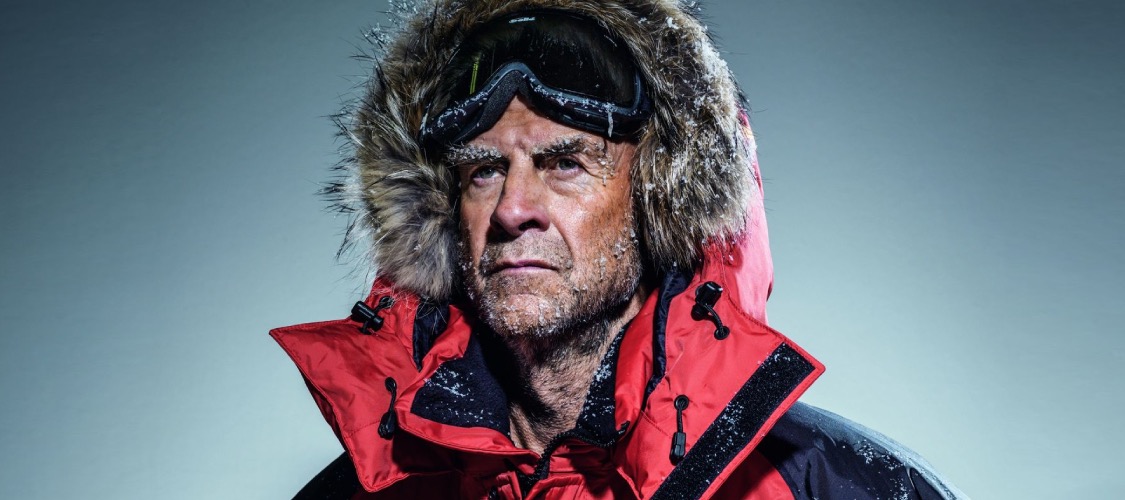Ranulph Fiennes – Leadership Lessons from the World’s Greatest Living Explorer
We all love stories of resilience, adventure, and human endurance—but few people embody these qualities quite like Sir Ranulph Fiennes. Often referred to as the “world’s greatest living explorer,” Fiennes has spent his life pushing the limits of human capability, undertaking expeditions to some of the most hostile environments on Earth.
From becoming the first person to circumnavigate the globe via both poles to summiting Everest at age 65—after suffering a heart attack—his ability to endure, adapt, and lead teams through extreme conditions offers a masterclass in leadership under pressure.
But Fiennes’ approach isn’t just about personal grit—it’s about preparation, adaptability, teamwork, and the ability to turn setbacks into stepping stones. His lessons are just as relevant in the boardroom as they are in the Arctic.
Let’s break down what business leaders can learn from his extraordinary life.
The Making of an Explorer
Born in 1944, Ranulph Fiennes grew up with discipline and adventure in his blood. His father was a British Army officer killed in WWII, and Fiennes later followed in his footsteps, serving in the British Army as part of the SAS. His military career honed his leadership, survival, and endurance skills—traits that would define his future.
But Fiennes’ transition into exploration wasn’t immediate. After leaving the army, he struggled to find direction, even working as a demolition expert at one point. However, his desire for adventure led him to undertake some of the most ambitious expeditions in history, including:
- The first surface circumnavigation of the world via both poles (1979–1982).
- The first unsupported crossing of Antarctica (1992–1993).
- Summiting Everest at 65, despite suffering a heart attack four months earlier.
- Completing seven marathons on seven continents in seven days—just four months after heart surgery.
Each of these achievements required more than just physical endurance—they demanded meticulous planning, adaptability, and leadership under extreme stress.
1. Plan for the Worst, Aim for the Best
One of Fiennes’ greatest strengths is his ability to anticipate and prepare for every possible challenge. Whether it was ensuring his team had enough supplies to cross the Antarctic or meticulously planning routes in the Arctic, he understood that success isn’t just about determination—it’s about strategy.
Fiennes was known for spending months, even years, studying routes, gathering intelligence, and testing equipment. He understood that preparation is the foundation of resilience.
Leadership Lesson: Success isn’t just about vision—it’s about detailed execution. Business leaders must plan for contingencies, anticipate potential obstacles, and ensure they have the right resources before making big moves.
2. Build Grit and Endurance
Few people have demonstrated sheer mental and physical endurance like Ranulph Fiennes. During his Transglobe Expedition, he and his team endured months of sub-zero temperatures, frostbite, isolation, and exhaustion. At one point, Fiennes famously amputated his own frostbitten fingers because he couldn’t bear waiting for medical help.
But grit isn’t just about surviving hardship—it’s about staying focused on the mission despite overwhelming odds. Business leaders face pressure, setbacks, and fatigue in their own environments. The ability to push through difficulty and keep a team motivated is essential for long-term success.
Leadership Lesson: Endurance isn’t just physical—it’s mental. Leaders must build personal resilience and help their teams push past challenges without losing momentum.
3. Adapt to Uncertainty
Every expedition comes with unexpected obstacles. Whether it’s shifting ice patterns in the Arctic, changing weather conditions, or supply shortages, Fiennes had to adapt in real-time. The ability to think on his feet and pivot under pressure often meant the difference between life and death.
This adaptability is just as crucial in business. Economic downturns, shifting markets, and unforeseen crises can derail even the best-laid plans. The ability to stay calm, adjust strategy, and move forward with confidence separates great leaders from average ones.
Leadership Lesson: Change is inevitable—how you respond to it defines success. Leaders must stay flexible, open-minded, and ready to adjust when challenges arise.
4. Build Trust in Teams
No great explorer succeeds alone, and Fiennes was no exception. He depended on teams who trusted him to lead them through extreme conditions. His ability to build high-trust, high-performance teams was crucial to every successful expedition.
One of the keys to his leadership was leading from the front. Whether hauling sleds across the ice, facing extreme hunger, or pushing through exhaustion, he never asked his team to do anything he wasn’t willing to do himself.
Leadership Lesson: Trust is earned through action. Business leaders must demonstrate commitment, integrity, and a willingness to share the burden of challenges with their teams.
5. Push Your Limits—Even When It Feels Impossible
Most people slow down with age—Fiennes does the opposite. Despite suffering a heart attack, undergoing double bypass surgery, and being in his 60s, he still climbed Everest, proving that it’s never too late to challenge yourself.
He refuses to let fear or past setbacks define his limits. In business, the same principle applies—companies that remain stagnant or leaders who refuse to step out of their comfort zones eventually become irrelevant.
Leadership Lesson: Growth happens outside of comfort zones. Leaders must embrace discomfort, take calculated risks, and continue challenging themselves no matter how much they’ve already achieved.
Lessons for Leaders
Ranulph Fiennes’ life isn’t just a story of adventure—it’s a blueprint for leadership in any environment. His experiences reveal five key lessons that every business leader can apply:
- Plan for the Worst, Aim for the Best – Success isn’t just about vision; it requires meticulous preparation and contingency planning.
- Build Grit and Endurance – Leaders must develop mental resilience and help their teams push through challenges.
- Adapt to Uncertainty – Change is inevitable; adaptability is the key to long-term success.
- Build Trust in Teams – High-performance teams are built on trust, integrity, and leading from the front.
- Push Your Limits – True growth happens outside of comfort zones; leaders should continue pushing themselves beyond perceived limitations.
By applying these principles, business leaders can cultivate resilience, navigate uncertainty, and inspire their teams to achieve extraordinary results.
What’s your next expedition—whether in business or life?
Further Reading
To dive deeper into these leadership principles, check out the following guides:
- The Art of Strategic Preparation: Planning for the Unknown
Learn how to conduct scenario planning, develop contingency strategies, and align your team for success. - Leading with Grit: Strategies for Endurance and Resilience
Explore practical ways to build resilience and encourage a culture of determination within your organisation. - Navigating Through Uncertainty: Adaptive Leadership in Action
Discover techniques to lead effectively in unpredictable environments and keep your team aligned during change. - Trust and Collaboration: Building Teams for Extreme Challenges
Learn how to foster mutual trust, align team strengths, and create a collaborative culture that thrives under pressure.
What principles from Fiennes’ leadership resonate most with you?
Prepare to move,
Trevor
#LeadershipLessons #Resilience #Adaptability #Teamwork #Grit #StrategicPlanning #Trust #RanulphFiennes #ExplorerMindset #BusinessLeadership




